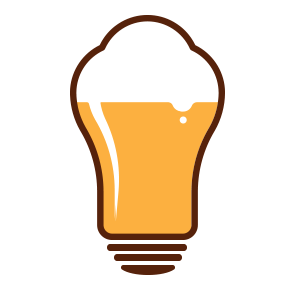IPA or India Pale Ale to give you its full name is a very historic drink with strong connections to the East India Company that traded in the Indian Ocean region. The beer was very popular with traders who worked for the company because of the breweries location near the East India Docks back in the UK.
IPAs have changed quite a lot over time as well when beers were exported to India the long voyage meant the beer had time to further develop and the conditions of the ship actually helped improve the taste and texture of the beer for many people. So, what did the first IPAs taste like?
The first IPAs were quite lightly hopped although they had a very distinct taste and of course a lighter colour. The first IPAs were brewed with coke-fired malt which meant the barley wasn’t quite as roasted and produced less smoke.
This different style of malting process meant you got a paler ale, over the next few decades breweries began to see the popularity of pale ales and started to manufacture their own. In the UK newer pale ales have a similar colour but a different taste.
They are well-hopped with a fruity flavour with a creamy texture although there are many different types of IPAs available these days. So, there is a quite an assortment of different flavours and textures so whatever your preferences in regards to textures and flavours are you will likely find a pale ale to match it.
IPA – A Historical Look
We’ve already looked at the origins of Indian Pale Ales but let’s look at how they have further developed over time. A number of breweries at the behest of the East India Company developed their own pale ales but these had a stronger hopped flavour to them.
In fact, it is from these pale ales that the IPAs today more closely represent and unsurprisingly these ales quickly proved to be very popular both in the UK and overseas. These new IPAs were quite strong they had less sugar and as already mentioned where well hopped.
This combined with their slightly higher base alcohol level made them one of the stronger drinks available at the time. However, there is a common misconception that these IPAs were very strong drinks. While they were stronger than the average beer they weren’t excessively strong.
In the mid-1800 hundreds, Indian Pale Ales were very popular in the UK which was also largely the main hub for pale ale breweries. Although it was during this time that more sugar was usually added to the recipe for a slightly sweeter drink.
Indian Pale Ales were also one of the more expensive alcoholic beverages at the time as well. The UK was the main supplier of IPAs although around the late 1800-hundreds a number of international breweries in countries such as Canada, America, and Australia started brewing their own IPAs as well.
There were very similar to the UK manufactured IPAs although they usually had a higher sugar content quite like the modern IPAs available today. Although American pale ales today are often quite split between the West and East Coast.
East Coast ales have a stronger more malty taste often with hints of spice while West Coast IPAs have a more prominent hop-flavour to them. So, to finish our look at Indian Pale Ales let’s look at their market presence today, shall we?
IPAs are very popular these days and are more plentiful than amber ales and this doesn’t just go for the UK either. In American Indian Pale Ales are the most popular type of beer and this is really down to its often unique texture and the wide assortment of different flavours you can find under the pale ale umbrella.
IPAs have changed a lot from how they once where and there is a rich variety of different options but they are a very popular drink with fans all over the world. Low alcohol and even some alcohol-free varieties of IPAs are also impacting the market as well. It’s a variant of beer with a rich history and certainly worth checking out if you haven’t already.
Buy Alcohol Free & Non Alcoholic IPAs
Looking to try something different? An Alcohol Free IPA or Non Alcoholic IPA? Check out our range here!

